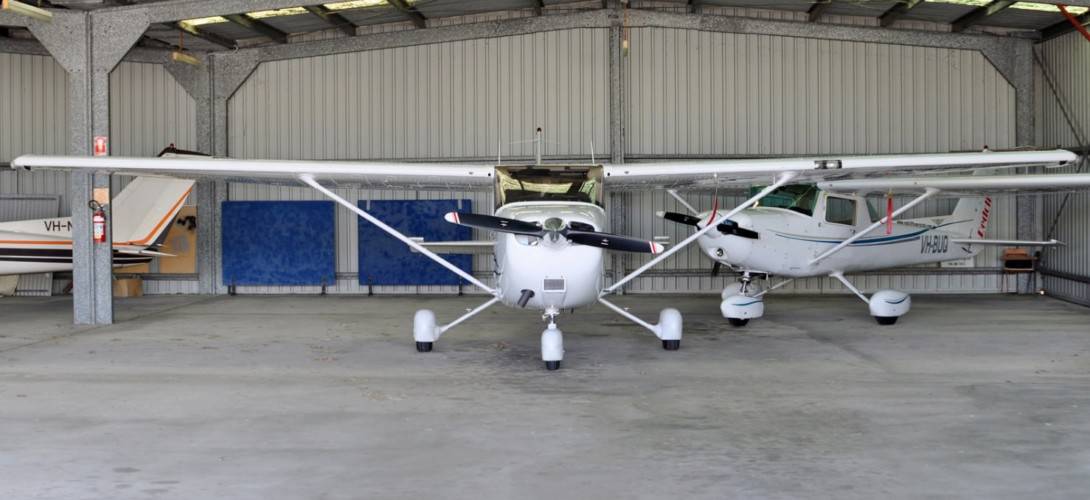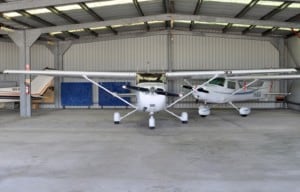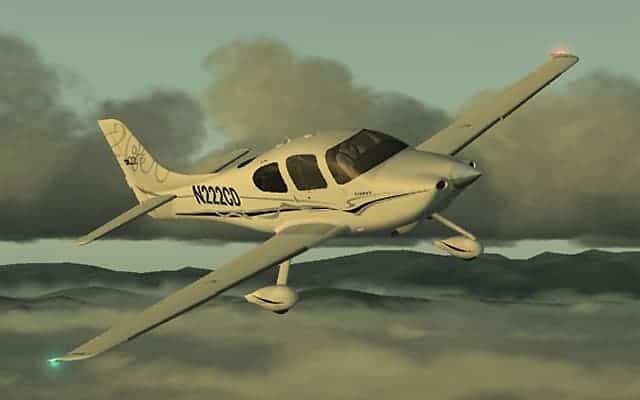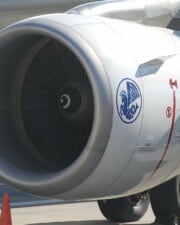Cessna aircraft are so ubiquitous that many people refer to all small piston-powered airplanes as “Cessna’s.” Their distinctive high-wing designs make them recognizable, even from a great distance. When it comes to training aircraft, the Cessna 152 and 172 are among, if not the, most popular planes for flight training in the world.
Table of Contents
Over the last 25 years, I’ve built up several thousand hours flying various light airplanes, including hundreds in the Cessna 152 (the plane I first soloed) and the Cessna 172 (the plane I work in most often). Here are some comparisons between the two, and some first-hand thoughts on these venerable planes.
Cessna 152
Cessna introduced the 152 (pronounced “one fifty-two”) in the late 1970s to redesign their popular 150. The plane is a small, high-wing, two-seat training aircraft. It’s powered by a 110-horsepower Lycoming O-235 four-cylinder, air-cooled, normally-aspirated engine. New 152s were manufactured from 1977 until 1985, with nearly 6,000 airframes produced.
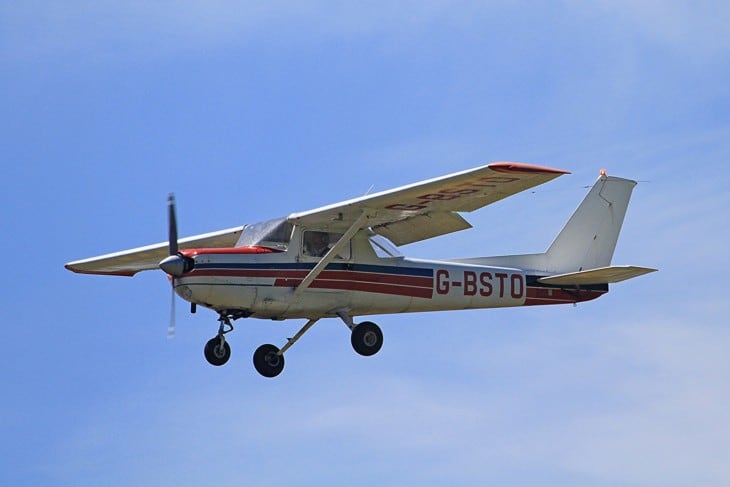
Like the Cessna 150 that came before it, the 152 featured tricycle-style landing gear with a steerable nose wheel. For pilots training for aviation careers, this made sense. Conventional landing gear, or taildraggers as they are known, were becoming less and less popular.
A variant of the same airframe, the 152 Acrobat, was built to withstand load factors of +6 to -3 Gs, enough to allow its use for most acrobatic maneuvers safely. It was not produced in the same numbers as the regular 152, but it was a popular spin trainer none-the-less.
The 152 is a small airplane, and it’s not luxurious by any stretch of the imagination. Its small size extends to the occupants and the fuel load. The plane’s max gross weight is only 1,670 pounds. When you subtract out the aircraft’s empty weight and the weight of full fuel tanks, only about 500 pounds remains between the two passengers. A baggage area can be converted to carry a child’s seat behind the two seats, but the weight cannot exceed 120 pounds.
Cessna 172 Skyhawk
When Cessna updated their popular model 170, the most significant change they made was to convert the airframe from a taildragger to tricycle landing gear. Not only was the 172 born, but it started an entirely new generation of Cessna aircraft using the 1X2 naming format. The 152 fit into this mold, as did the higher-performance version of the 172 Skyhawk, the 182 Skylane.
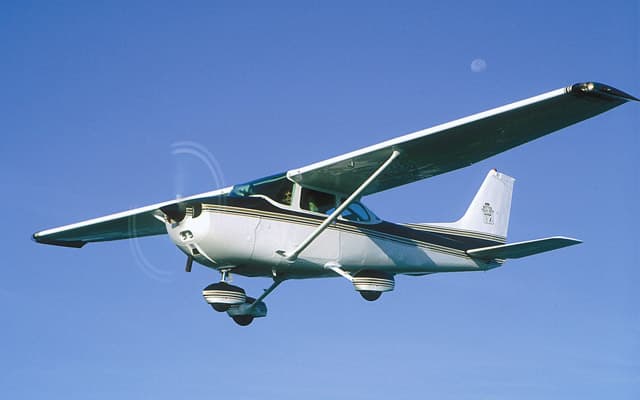
The 172 is basically the big sister to the 152–it’s a nearly identical airframe, just larger in every dimension to hold four people. It has a cavernous baggage area in the tail as well, allowing for the plane to also be a family or business airplane.
First flown in 1955, the Cessna 172 Skyhawk is still in production today. However, there was a long hiatus from the mid-1980s until the late 1990s, when demand for aircraft was so low that none of the major manufacturers were producing new airplanes. Cessna has now made more than 44,000 172s.
Throughout its history, the airframe has been fitted with many new features and different engines. Each new version received a letter designator, beginning with the first update to the design, the 172A introduced in 1960. The current version in production is the 172SP, an updated and high-power version of the 172S.
Cessna has capitalized on the popularity of the 172 to create a few other notable designs. Replacing the fixed landing gear with retractable gear, they made the 172RG for a few years. This design was an important part of the fleets at flight schools. The retractable landing gear, adjustable flaps, and constant-speed propeller allowed them to offer required FAA commercial pilot training in a “complex” aircraft.
Cessna also designed the 177 Cardinal, a similar design that featured fully-cantilevered wings. The design was intended to replace the 172, but it never quite caught on. The 175 Skylark was a higher-powered version of the plane.
Cessna really hit the nail on the head, though, with the 182 Skylane. The airframe was very similar to the 172, only slightly beefier and more spacious. It featured a six-cylinder engine, fixed landing gear, and was targeted at private owners. Where the 172 is a docile and somewhat underwhelming training airplane, the 182 gets its passengers to their destination quicker and more comfortably. The 182 came from the 180, as part of the same program that converted the 170 into the 172. Like the 172, the 182 Skylane is still in production today.
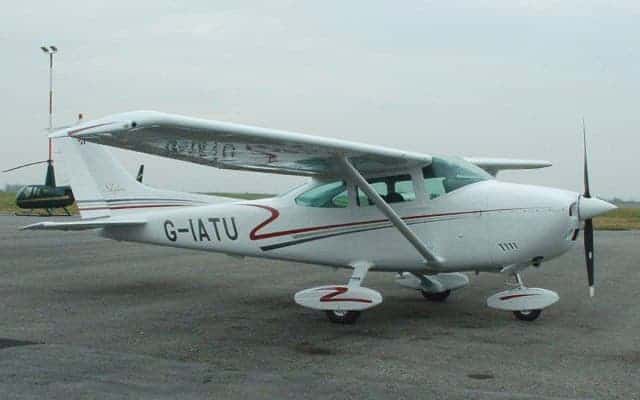
Differences and Similarities
Design and Construction
Both aircraft are built essentially like all other Cessna piston aircraft of their era. Their airframes use aluminum alloys that are riveted together. Certain components, like the nose cowl and wingtips, are made of fiberglass. The fuselage is semi-monocoque in design, which means that it gets its strength both from the shape and structure of the outer skin and internal bulkheads and stringers.
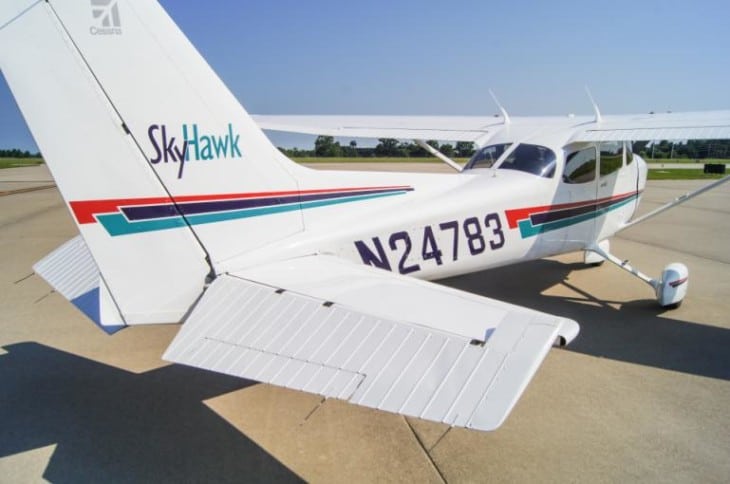
Both the 152 and the 172 share the same conventional aerodynamic designs. They both have tricycle landing gear, with spring steel main struts and air and oil nose struts. The empennage features conventional horizontal and vertical stabilizers, elevators, and rudders. Both planes have a pilot-controllable elevator trim system. For rudder trim, a ground-adjustable tab is used. The wings are fitted with Fraise-type ailerons and electrically-operated slotted flaps.
Both airplanes feature high-wing designs with a single lift strut for support. For the most part, high-wing and low-wing planes perform very similarly. High-wing designs allow for a better view of the ground below, useful in aerial photography or survey applications.
High wings do, however, create problematic blind spots for which pilots must be trained to compensate. Many accidents have resulted from collisions resulting from pilots being unable to see above them or in the direction they are turning.
Operational Comparison
The 172 is, hands down, the more capable of the two aircraft. It is roomier and more powerful–it can carry two large adults and full fuel with no problems. Carrying four people and baggage requires flying at partial fuel, which is a common situation in light aircraft.
Flying in a 152 is for close friends only. It’s tight; full side-to-side contact is unavoidable. The door latches were of poor design, too. It’s all too common for a door to pop open midflight as you press yourself outboard to get more room to move your arms.
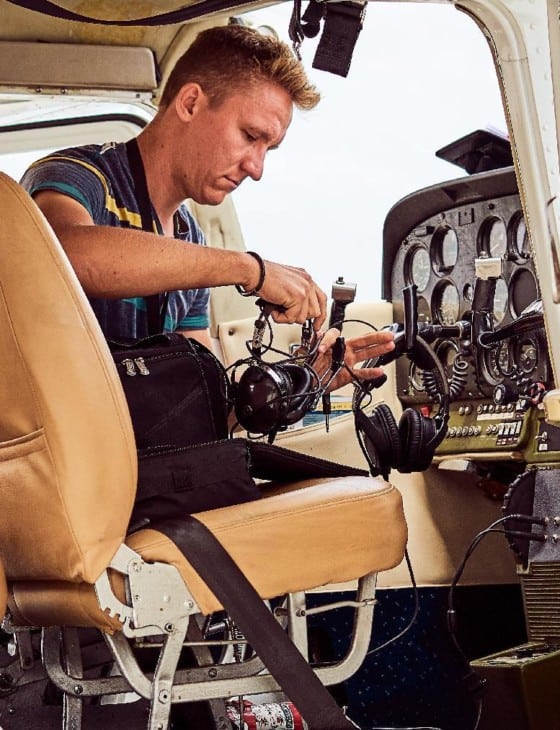
When loaded to max gross, as 152s nearly always are, their performance is sufficient for a training airplane. Their climb rate rarely exceeds 700 feet per minute on chilly days and can get agonizingly slow at higher density altitudes.
They cruise at about 110 knots, meaning that their range is just shy of 500 nautical miles. Early 172 models, which featured 150 horsepower engines, have very similar performance numbers. When students go out on their first solo flights, leaving their flight instructor’s heft behind on terra firma, they are also elated at the performance of their now spritely little planes.
In contrast, the 172 is similar on the inside to a small two-door car. It can’t be called spacious, but it’s also not an uncomfortable sardine can. Newer models with 160 to 180-horsepower motors mean that the plane has better climb speeds, higher cruise speeds, and higher max gross weights than the older versions. Many have long-range fuel tanks carrying 56 gallons, meaning that two people can enjoy a range of almost 700 miles.
Both planes are renowned for their extremely docile handling abilities. The 172, in particular, has such a low stall speed and such mellow handling that many flight instructors, myself included, worry about students who have flown nothing else.
The one word that summarizes flying these planes above all others is “forgiving.” Forgiving of pilot errors, forgiving of bad landings, and forgiving of bad technique. The result is a training airplane with a pretty impressive safety record and a generation of pilots who are, at least at first, startled by more responsive (and, by extension, more normal) aircraft.
Operators
Flight training is the primary mission of the 152 and 172, but Cessna sold many of these planes to private owners. Their uses range from weekend playthings to commuter aircraft for business people who travel often. They aren’t fast or posh, but they do fly well and reliably.
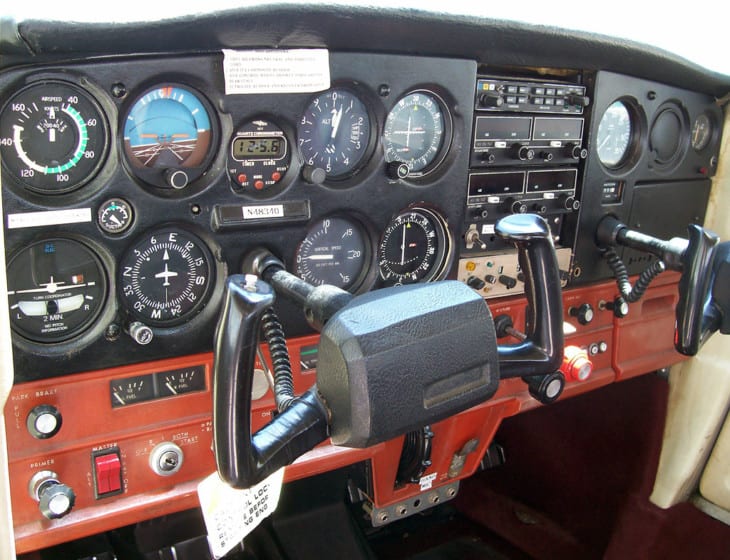
The planes’ high-wing design makes them excellent platforms for aerial photography and survey work, though the wing strut and landing gear still considerably block the view. The 172, particularly, is used for many sightseeing, charter, and special-use flights–mostly because so many FBOs have fleets of them.
Many law enforcement, wildlife, and forestry services have Cessnas in their fleets. They’re mellow enough flyers to allow a single pilot operator to control the aircraft while conducting surveillance or aerial spotting. For example, the Florida Fish and Wildlife Commission conducts counts of the endangered West Indian Manatee from Cessna’s.
The Cessna T-41 Mescalero is the Air Force version of the C172, and the T-51 is their version of the C152. Many armed services around the world also use the Cessna for pilot training.
Direct Competitors
Cessna’s biggest competitor in the small aircraft market has traditionally been Piper. Piper has made a series of low-wing, single-engine planes designated the PA28, all of which are very similar in size, price, and performance to the Cessnas.
This series of aircraft have gone through many different names and branding but is most commonly referred to as Cherokees or Warriors. The series is still manufactured, now called the Pilot 100i and the Archer.
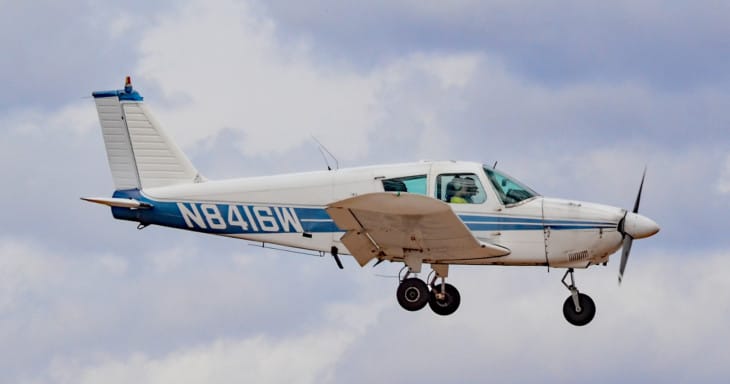
Besides the much older Cub and its descendants, Piper never produced a very popular two-seater to compete with the 152. They made the Piper Tomahawk to attract the flight school market, but the plane never caught on.
Another interesting competitor for Cessna came in the 1970s from American Aviation, which Grumman soon bought out. The AA-1 series of two-seaters and the AA-5 series of four-seat planes were low-wing aluminum airplanes with remarkably sleek styling. Renowned aircraft engineer Jim Bede designed them.
They featured bonded aluminum construction, so their airframes were low-drag and free from rivets. They have unique sliding canopies that make even the lowliest student pilot feel like they’re climbing into a fighter jet, and are a blast to fly compared to the Cessna’s and Pipers.
Beechcraft, known for its high-performance Bonanzas and Barons, has created several low-powered training variants over the years. In the two-place market, they briefly produced the Beechcraft Skipper. To compete with the 172, they produced the Sundowner.
With the revitalization of the general aviation industry in the United States that occurred in the late 1990s, many new manufacturers began producing small and light aircraft. Cessna now competes in a fairly crowded field when it comes to light piston airplanes. Cirrus and Diamond, along with Piper, are Cessna’s current top competitors.
Some may argue that modern designs, which use composite airframes and modern manufacturing techniques, don’t compete with Cessna’s and Piper’s old-school riveted aluminum construction. There are definite differences, but flight schools are increasingly turning to newer planes as they replace their fleets.
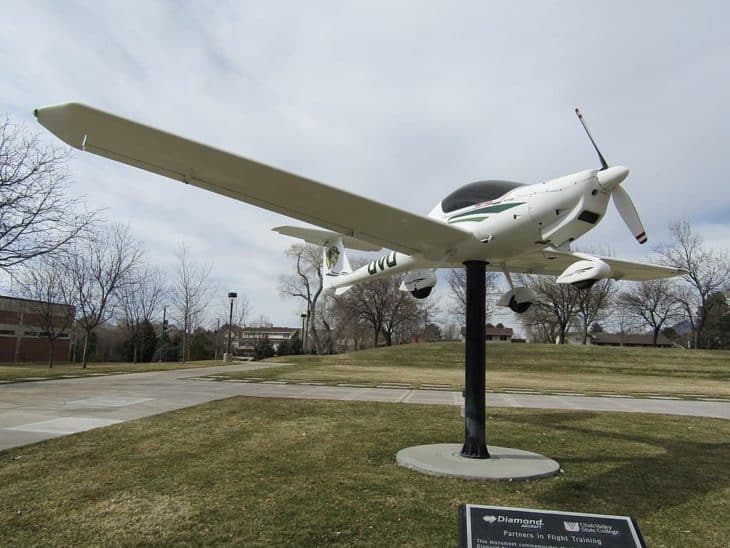
Cirrus has always focused more on owner/operators and air taxi services than flight training, but none-the-less several schools use the SR20 and SR22 extensively. Diamond’s DA-20 Katana and DA-40 Stars are designed for training, with sleek styling, excellent handling, and superb performance that will make private owners happy too.
Conclusion
Both the 152 and the 172 are fantastic airplanes. They have proven themselves with decades of reliable service and tens of thousands of pilots successfully trained. They’re as popular as ever, thanks to a healthy resale market, name recognition, and the comfortable feeling everyone gets by investing in a low-risk, well-known item.
Like many pilots, I have a love-hate relationship with Cessna’s. They’re reliable–performing their mission day in and day out without complaint. However, from the pilot’s perspective, I’d much rather be flying something sporty and more fun.
A Cessna is basically the aeronautical equivalent of mom’s minivan. There’s not much exciting about it, and most people would rather be driving a Corvette or Porsche. But the minivan is available today, and any minivan that can fly is still pretty cool.
Related Posts
